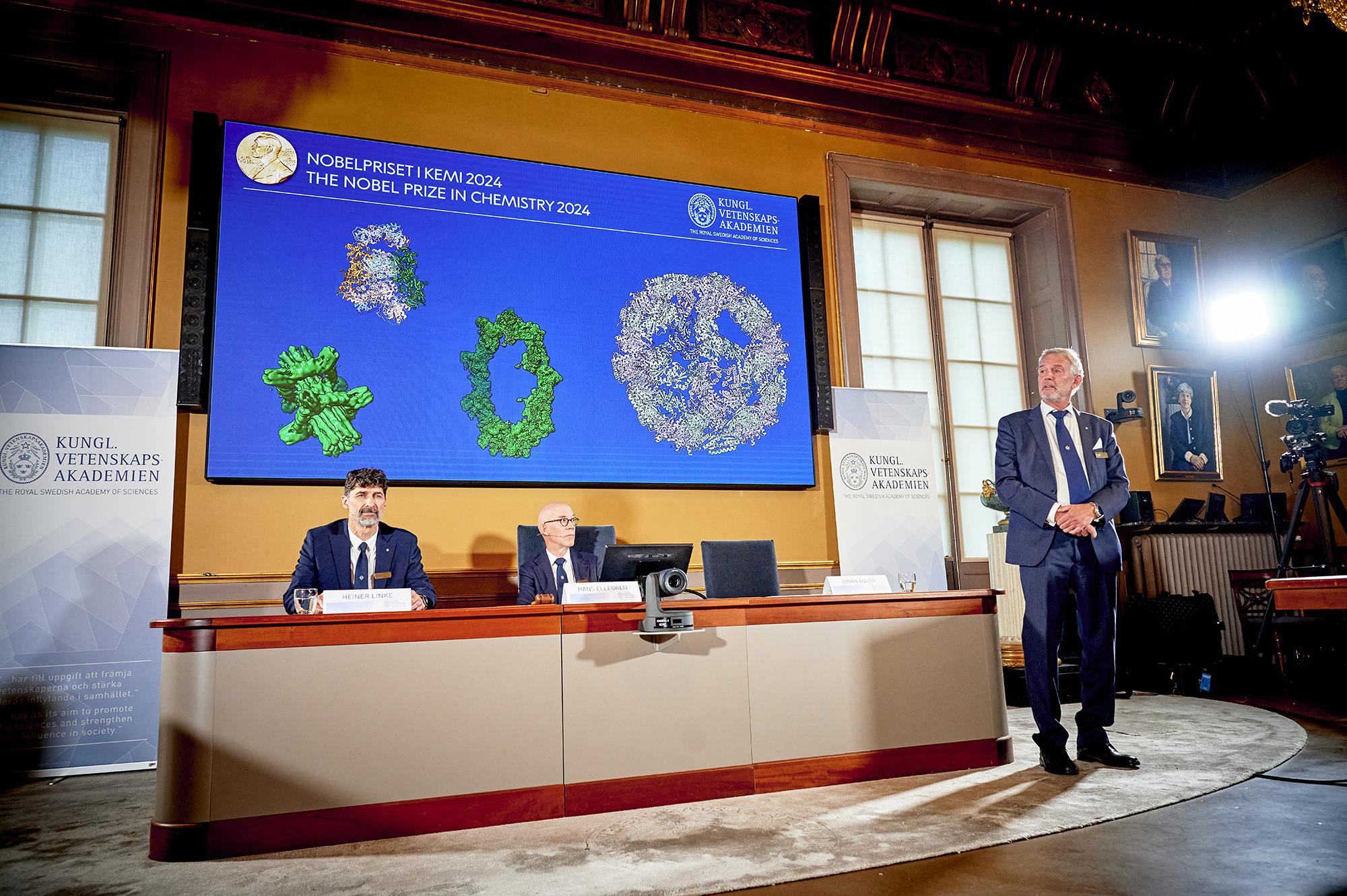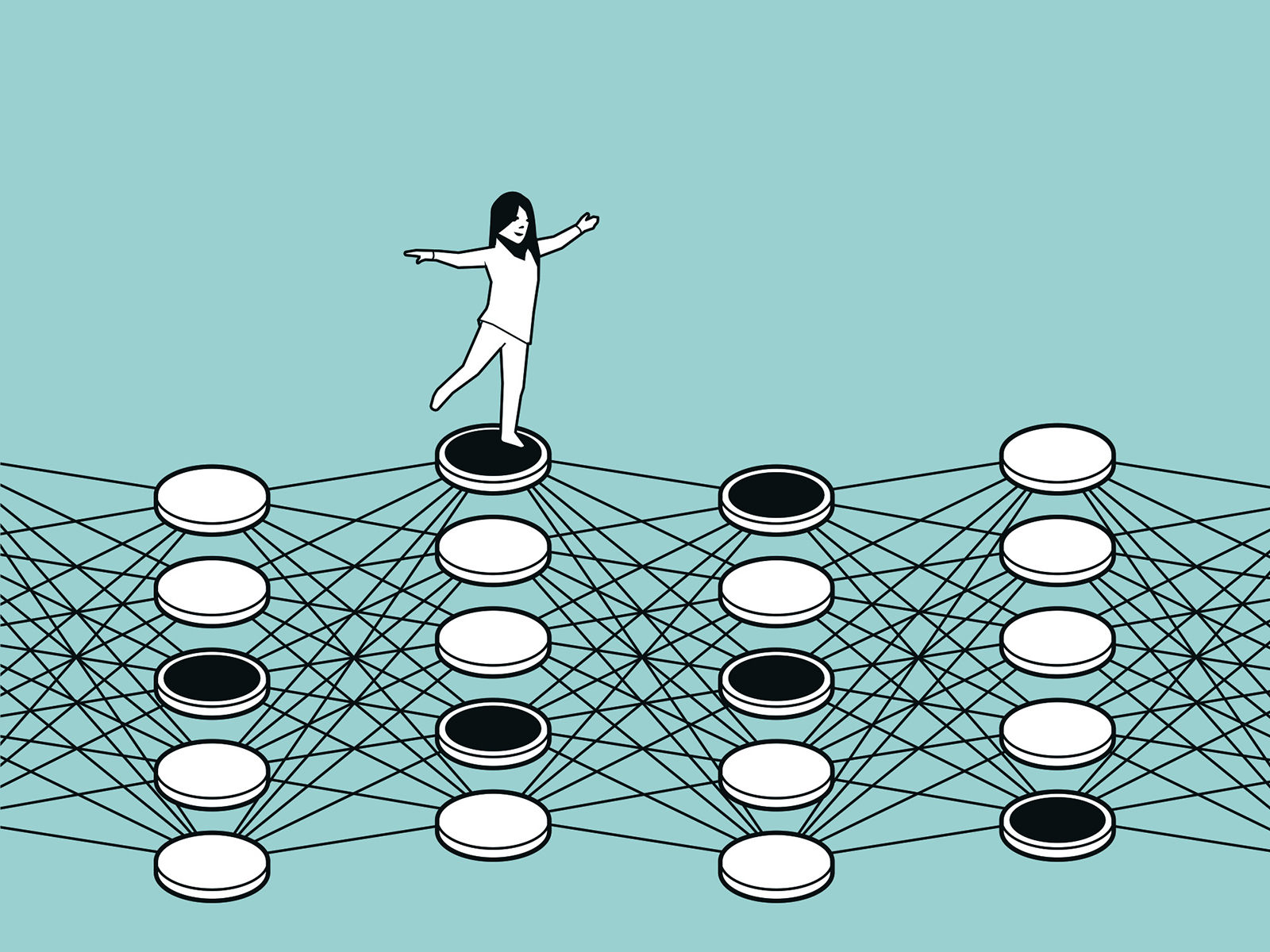The Royal Swedish Academy of Sciences has decided to award the Nobel Prize in Chemistry 2024 with one half to
David Baker, University of Washington, Seattle, WA, USA and Howard Hughes Medical Institute, USA
“for computational protein design”
and the other half jointly to
Demis Hassabis, Google DeepMind, London, UK and
John Jumper, Google DeepMind, London, UK
“for protein structure prediction”.

The Nobel Prize in Chemistry 2024 is about proteins, life’s ingenious chemical tools. David Baker has succeeded with the almost impossible feat of building entirely new kinds of proteins. Demis Hassabis and John Jumper have developed an AI model to solve a 50-year-old problem: predicting proteins’ complex structures. These discoveries hold enormous potential.
The diversity of life testifies to proteins’ amazing capacity as chemical tools. They control and drive all the chemical reactions that together are the basis of life. Proteins also function as hormones, signal substances, antibodies and the building blocks of different tissues.
“One of the discoveries being recognised this year concerns the construction of spectacular proteins. The other is about fulfilling a 50-year-old dream: predicting protein structures from their amino acid sequences. Both of these discoveries open up vast possibilities,” says Heiner Linke, Chair of the Nobel Committee for Chemistry.
Proteins generally consist of 20 different amino acids, which can be described as life’s building blocks. In 2003, David Baker succeeded in using these blocks to design a new protein that was unlike any other protein. Since then, his research group has produced one imaginative protein creation after another, including proteins that can be used as pharmaceuticals, vaccines, nanomaterials and tiny sensors.
The second discovery concerns the prediction of protein structures. In proteins, amino acids are linked together in long strings that fold up to make a three-dimensional structure, which is decisive for the protein’s function. Since the 1970s, researchers had tried to predict protein structures from amino acid sequences, but this was notoriously difficult. However, four years ago, there was a stunning breakthrough.
In 2020, Demis Hassabis and John Jumper presented an AI model called AlphaFold2. With its help, they have been able to predict the structure of virtually all the 200 million proteins that researchers have identified. Since their breakthrough, AlphaFold2 has been used by more than two million people from 190 countries. Among a myriad of scientific applications, researchers can now better understand antibiotic resistance and create images of enzymes that can decompose plastic.
Life could not exist without proteins. That we can now predict protein structures and design our own proteins confers the greatest benefit to humankind.

Laureates
David Baker, born 1962 in Seattle, WA, USA. PhD 1989 from University of California, Berkeley, CA, USA. Professor at University of Washington, Seattle, WA, USA and Investigator, Howard Hughes Medical Institute, USA.
David Baker, University of Washington
Demis Hassabis, born 1976 in London, UK. PhD 2009 from University College London, UK. CEO of Google DeepMind, London, UK.
John Jumper, born 1985 in Little Rock, AR, USA. PhD 2017 from University of Chicago, IL, USA. Senior Research Scientist at Google DeepMind, London, UK.
Prize amount: 11 million Swedish kronor, with one half to David Baker and the other half jointly to Demis Hassabis and John Jumper.
Documents
The illustrations are free to be used by media for news reporting about the Nobel Prizes and the Prize in Economic Sciences, individual teachers and educators for educational purposes, individual researchers for research purposes, or private individuals for personal, non-commercial use. No modifications are allowed, and “©Johan Jarnestad/The Royal Swedish Academy of Sciences” must be noted. Commercial use for advertising purposes is not permitted.
For other uses, permission from the Royal Swedish Academy of Sciences is required. To apply for permission, please use the Academy’s contact form
Contacts
Press contact
Eva Nevelius, Press Secretary, the Royal Swedish Academy of Sciences
+46 70 878 67 63, eva.nevelius@kva.se
Expert
Johan Åqvist, the Nobel Committee for Chemistry, The Royal Swedish Academy of Sciences
+46 70-425 04 04, johan.aqvist@icm.uu.se
Read more about the Nobel Prize
The official Nobel Prize website
The Royal Swedish Academy of Sciences, founded in 1739, is an independent organisation whose overall objective is to promote the sciences and strengthen their influence in society. The Academy takes special responsibility for the natural sciences and mathematics, but endeavours to promote the exchange of ideas between various disciplines.
Nobel Prize® and the Nobel Prize® medal design mark are registrated trademarks of the Nobel Foundation.
Photos from the press conference
 Download image
Download image
 Download image
Download image
 Download image
Download image
 Download image
Download image





